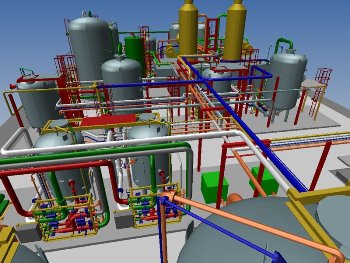3D models are increasingly used during the design of industrial facilities. However, their implementation in that field is much less advanced than in other industries such as aerospace or automotive where this tool has proven to deliver significant value, most of it linked to increased collaboration with the entire supply chain. Industrial facility design 3D models are often incomplete and as-build model data is not comprehensively gathered. In our new White Paper (2022-11] ‘How to Overcome 3D Model Issues and Limits for Industrial Projects’ we explore the current situation, its causes, and what can be done to improve and release the value of modern 3D modelling in the field of industrial projects.
Usage of 3D models in industrial infrastructure projects appears to be rather in its infancy leading to the inability to exploit the potential value of such integrated collaborative platforms that can digitally gather valuable data. The main issue is the digital gaps across the value chain. Only a decisive investment by owners and main contractors will allow to develop workable approaches. A substantial change management and incentivisation will also need to be deployed across the value chain (suppliers and subcontractors) to ensure they adopt new ways of working using a common platform. We expect this to be a major issue in the next few years possibly leading to differentiation in terms of competition across the industrial infrastructure project value chains. In particular, the digital discontinuity across the project value chain appears to be the main issue to be addressed
Read our new White Paper (2022-11] ‘How to Overcome 3D Model Issues and Limits for Industrial Projects’ to understand better how the usage of 3D models can be significantly improved in large industrial projects!
If you can’t access the link to the white paper, copy and paste the following link in your browser: https://www.projectvaluedelivery.com/_library/2022-11_3D_model_issues_limits_v1.pdf


